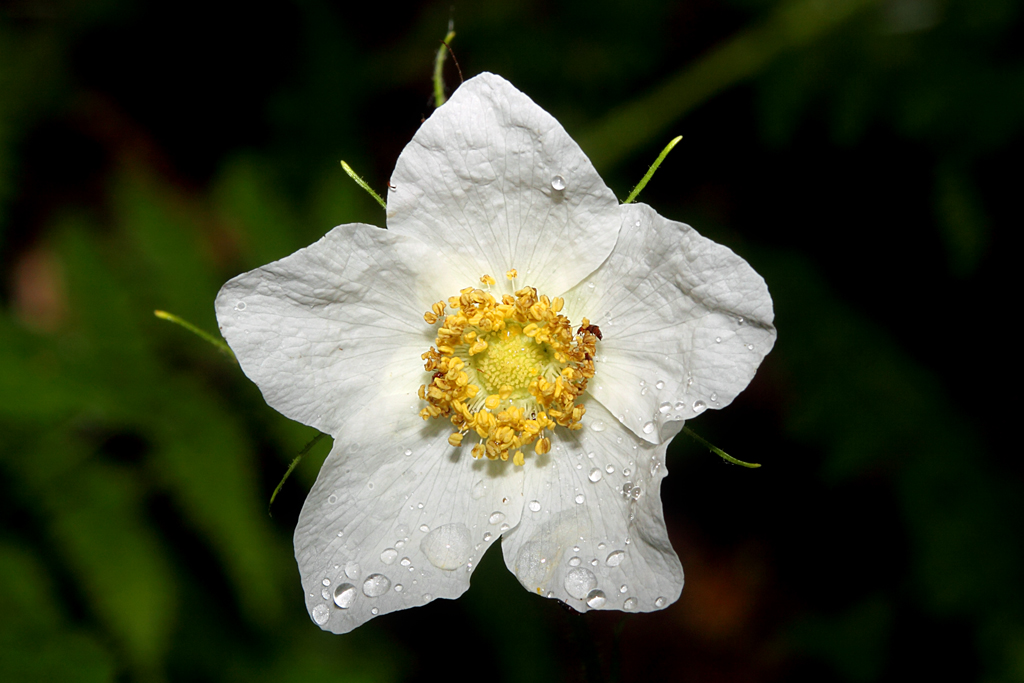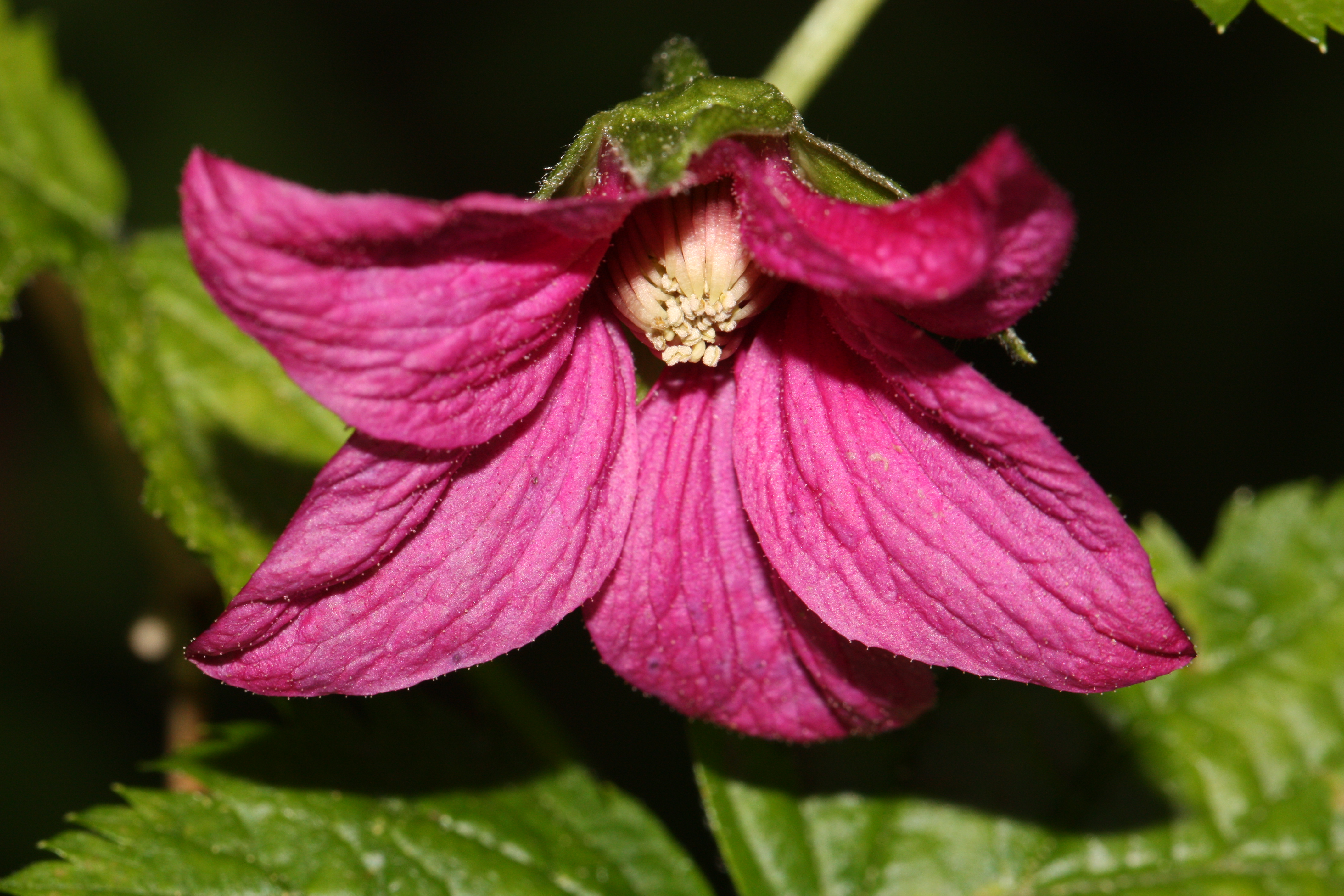
So I got a phone call yesterday, somebody questioning my post regarding the start of the honey flow, and crediting the salmonberry, with a comment ‘here on Quadra the samlon berries have been done for a while now, and are already fruiting’. Got me to thinking, and researching, I will admit we’ve had some confusion over time about a couple of the flower identifications, and now I understand the confusion. The photo is linked from wikipedia, and here is the description they offer.
=====
Rubus parviflorus, commonly called thimbleberry,[2] salmonberry,[2] and snow bramble,[3] is a species of Rubus, native to North America.[4]
=====
This is the flower we see when the flow starts to ramp up here at our location, and, it seems there is confusion as to what it is, is it a thimbleberry, or a salmon berry ? Turns out, it just depends what reference you are using, the linked references call it by different names in different areas. If you follow the reference links on wikipedia, there are multiple taxonomy references, one calls it a Thimbleberry and another calls it a Salmonberry.
So then we look at the other flowers that appear in the same group of bushes beside the pond here. So next we type ‘salmonberry’ into the search, and see what comes up.

And here is the description
==========
Rubus spectabilis
From Wikipedia, the free encyclopedia
“Salmonberry” redirects here. It is not to be confused with Rubus parviflorus.
Rubus spectabilis (salmonberry) is a species of brambles in the rose family, native to the west coast of North America from west central Alaska to California, inland as far as Idaho.[2][3][4]
========
So, we have multiple bushes intermixed beside the pond which is right outside my back door. It has BOTH of these flowers intermixed in the pond. The pink one has been blooming for some time, and the white one started just a few days ago. The white one is the one that marks the beginning of our honey flow, and I’ve been referring to it as the Salmonberry, because the references I originally looked up to identify it, called it a Salmonberry. Turns out, different references call it different things, and the common name locally for this flower is indeed the Thimbleberry, and the pink one is what locals call the Salmonberry.
I think this will clear up any confusion on the subject, and explains why we have conflicts on some of the flower names. I’ll clean up the bloom dates pages to reference the names used more commonly in our area.
Another detail I think is important to mention and understand. When we say the flow is on, we base that on data coming from the scale hive, then look around the yard to see what is blooming at the time. The assumption is, whatever plants are producing the flow, even if they aren’t the same ones we see blooming, they are something that blooms at the same time. Last year, the majority of our honey crop came in while the Thimbleberry bloom was happening, and we see the same trend starting again this year. Scale hive lost weight on the cool / rainy days, but, on the warm days we are seeing weight increases in the 5lb per day range.

 So I got a phone call yesterday, somebody questioning my post regarding the start of the honey flow, and crediting the salmonberry, with a comment ‘here on Quadra the samlon berries have been done for a while now, and are already fruiting’. Got me to thinking, and researching, I will admit we’ve had some confusion over time about a couple of the flower identifications, and now I understand the confusion. The photo is linked from wikipedia, and here is the description they offer.
=====
Rubus parviflorus, commonly called thimbleberry,[2] salmonberry,[2] and snow bramble,[3] is a species of Rubus, native to North America.[4]
=====
This is the flower we see when the flow starts to ramp up here at our location, and, it seems there is confusion as to what it is, is it a thimbleberry, or a salmon berry ? Turns out, it just depends what reference you are using, the linked references call it by different names in different areas. If you follow the reference links on wikipedia, there are multiple taxonomy references, one calls it a Thimbleberry and another calls it a Salmonberry.
So then we look at the other flowers that appear in the same group of bushes beside the pond here. So next we type ‘salmonberry’ into the search, and see what comes up.
So I got a phone call yesterday, somebody questioning my post regarding the start of the honey flow, and crediting the salmonberry, with a comment ‘here on Quadra the samlon berries have been done for a while now, and are already fruiting’. Got me to thinking, and researching, I will admit we’ve had some confusion over time about a couple of the flower identifications, and now I understand the confusion. The photo is linked from wikipedia, and here is the description they offer.
=====
Rubus parviflorus, commonly called thimbleberry,[2] salmonberry,[2] and snow bramble,[3] is a species of Rubus, native to North America.[4]
=====
This is the flower we see when the flow starts to ramp up here at our location, and, it seems there is confusion as to what it is, is it a thimbleberry, or a salmon berry ? Turns out, it just depends what reference you are using, the linked references call it by different names in different areas. If you follow the reference links on wikipedia, there are multiple taxonomy references, one calls it a Thimbleberry and another calls it a Salmonberry.
So then we look at the other flowers that appear in the same group of bushes beside the pond here. So next we type ‘salmonberry’ into the search, and see what comes up.